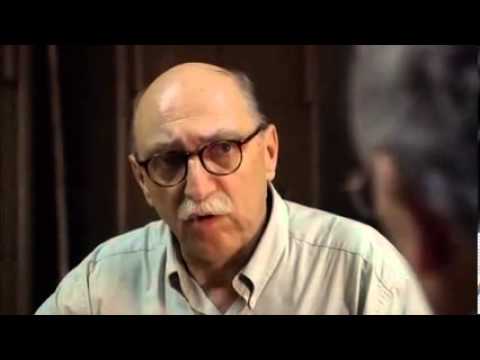Thanks for your sharing, but I read on the net that over the years there has been much debate about the authenticity of the Piprahwa find, particularly, an inscription on a reliquary vase found at the site.
Piprahwa Stupa: resting place of the Buddha
Piprahwa is particularly known for its large Buddhist Stupa which is argued to be one of the eight resting places of the Buddha’s ashes.[3][4]
This Stupa was discovered by W.C. Peppe, a British colonial landowner of an estate at Piprahwa.[5][6][7]
In 1897, W.C. Peppe led a team of men to unearth a large mound on his land. Having cleared away scrub and jungle they set to work building a deep trench through the mound. Eventually they came to a large stone coffer which, on opening, contained several small vases containing ashes and jewels.[8]
On one of the vases was an inscription which was translated at the time to mean “This relic deposit of the Lord Buddha is the share of this renowned Sakya brethren, his own sister’s children and his own son;” meaning that this reliquary contained the ashes of the Buddha, a member of the Sakays.[9] A momentous historical find for Buddhists all over the world.
However, over the years there has been much debate about the authenticity of the Piprahwa find, and in particular, an inscription on a reliquary vase found at the Piprahwa Stupa.
Some non academic critics argue that the Piprahwa find was probably a forgery by a Dr Fuhrer, an archaeologist in Northern India at the time of the excavation and working some twenty miles away from Piprahwa, and who became notorious for forging Buddhist relics.[10]
Others, including descendants of W.C. Peppe and several academic experts dispute this theory of forgery, citing a range of evidence including historical records, personal documents, drawings, and archaeological and linguistic evidence.[11]
In 2006 a conference was held in England at Harewood House, Yorkshire, to discuss the authenticity of the Piprahwa Stupa and its inscription. Several world-renowned experts in Indology, Indian philology, and Sanskrit attending the conference concluded that the Piprahwa Stupa and its contents, including the inscription and reference to the Buddha’s ashes, are authentic.[12]
More recently, academic expert opinion obtained for a National Geographic documentary on the Piprahwa Stupa entitled “Bones of the Buddha” (May, 2013) suggests - with a high degree of certainty - that Dr Fuhrer could not have been involved in forging the Piprahwa reliquary inscription. This is because Dr Fuhrer lacked the complete knowledge of the language used to write the inscription, and more importantly, would never have known a particular word written on the reliquary.
Experts on ancient Indian languages and history within the documentary “Bones of the Buddha” are now of the opinion that the reliquary found at Piprahwa did contain a portion of the ashes of the Buddha because the inscription is deemed authentic and could not have been forged, and the inscription does translate as ‘this vase contains the Buddha’s ashes’.
The general consensus in the documentrary “Bones of the Buddha” is that the Piprahwa Stupa was built by the Emperor Ashoka a couple of hundred years later over the original and more simple interment site of one eighth of the Buddha’s ashes. Experts within the documentary point to the close similarity of materials used at Piprahwa and its grand size with other Ashokan Stupas, and that the coffer containing the reliquary found at Piprahwa also reflects Ashokan workmanship, design, and the type of stone used for monuments like the Lumbini pillar erected during his reign.
The original interment site of the Buddha’s ashes at Piprahwa was discovered by the Indian archaeologist S.M. Srivastava in the 1970s several feet deeper than the coffer containing the relics that W.C. Peppe had excavated.[13] This find was dated to the period in which Buddha lived.[14]
Mr Srivastava’s excavation also discovered some archaeological evidence that Piprahwa was within Kapilvastu - the homeland of the Buddha. However, the location of Kapilvastu remains hotly debated, with competing claims that Kaplivastu is at Tilaurakot in Nepal.
Recent evidence concerning the authenticity of the Piprahwa reliquary once more raises questions about the exact whereabouts of Kapilvastu, tilting the evidence towards it being located in India.
Relics and archaeological artifacts from the Piprahwa Stupa are to be found in the Calcutta and New Delhi Museums, the Golden Mount Temple in Bangkok, in Burma, the Dipaduttamrama Temple (also known as the Jewel Stupa) in Colombo, Sri Lanka, and the Anuradhapura Temple, Kandy, Sri Lanka. A small portion of the relics were given by the Indian Government for W.C. Peppe to retain, and these are still owned by descendants of the Peppe family in England.[15]
Today, the relics from the original and the 1970s excavations of the Piprahwa Stupa are revered by many Buddhists the world over.[16]
In 1978 ten million people paid homage to the relics from Piprahwa when they travelled to Sri Lanka, and in August 2012 the Indian government once more allowed the relics to be lent to Sri Lanka.[17]
In June 2013, the grandson of W.C. Peppe appeared on the British television programme [http://www.channel4.com/programmes/four-rooms/4od#3526988 ], hoping to sell the jewels found at the site. However, the provenance of the jewels at the time of making the programme (January 2013) was yet to be conclusively established, and the four dealers on the programme felt that if he was able to obtain this they would be of immense historic value.
Since the making of the programme Four Rooms in January 2013, the grandson of W.C. Peppe has sought official written provenance from world leading experts in Indian history and languages who vouch for the authenticity of the Piprahwa find.[18] One of those experts appeared on the National Geographic programme “Bones of the Buddha” stating that the inscription on the reliquary urn found at Piprahwa is authentic.
There is a website discussed about the Piprahwa stupa deception here: The Piprahwa Deceptions: Set-ups and Showdown

